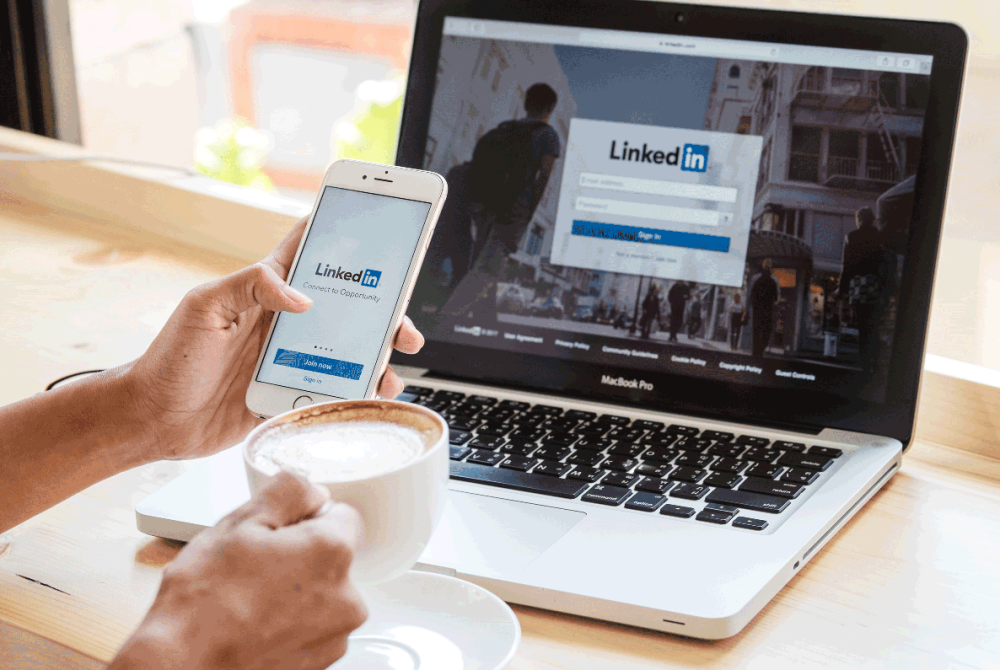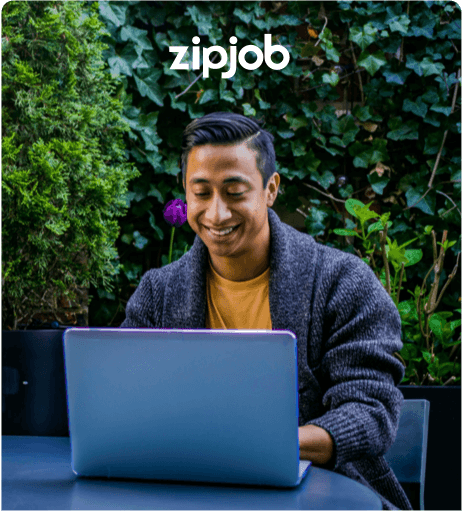Should You Apply to Jobs Using Your Resume or LinkedIn?

10 min read

As the digital landscape continues to shape the job market, professionals are presented with a unique opportunity to showcase their qualifications through platforms like LinkedIn. By leveraging this widely recognized professional networking platform, you can create an impressive online representation of your skills, experience, and achievements. However, the question remains: should you solely rely on your LinkedIn profile or maintain a traditional resume as well?
In the following sections, we will explore the advantages of having your resume on LinkedIn, discuss how to seamlessly integrate your resume with your LinkedIn profile, shed light on employer preferences, and address the possibility of using your LinkedIn resume to apply for job opportunities. Let's navigate this crucial decision together and optimize your job application strategy.
Should you use LinkedIn to apply for jobs?
With its robust features and expansive network, LinkedIn has become a go-to platform for professionals seeking new job opportunities. The platform offers a dedicated job board where employers post openings, making it a convenient hub for job seekers. When applying for jobs through LinkedIn, it's essential to consider the following aspects.
The LinkedIn job board
LinkedIn's job board provides a wealth of job listings across various industries and locations. By utilizing the job search function, you can explore and filter opportunities based on your preferences. The platform allows you to save job searches, receive alerts for new openings, and even directly apply to positions using your LinkedIn profile.
Complementing your LinkedIn profile with a resume
While LinkedIn offers a comprehensive overview of your professional background, it's important to remember that your LinkedIn profile should not replace your resume entirely. Instead, think of your resume and LinkedIn profile as complementary tools in your job application arsenal.
Your LinkedIn profile allows you to showcase your skills, experience, and accomplishments to a wide audience, making it an excellent resource for recruiters and hiring managers to assess your qualifications. However, some employers may still request a traditional resume as part of their application process or prefer a document that is specifically tailored to the job at hand.
To maximize your chances of success, consider customizing your resume to highlight the most relevant experiences and skills for each position you apply to. Upload your resume to LinkedIn, ensuring that your profile and resume work together to provide a comprehensive representation of your qualifications.
💡ZipTip: For detailed directions on how to attach your resume, head to our post on how to upload your resume to LinkedIn. That post will also walk you through how to add your resume to your LinkedIn profile.
Why you should use both your LinkedIn profile and resume
Even if you apply for a job using your LinkedIn profile and capture the attention of the hiring manager, they're probably going to ask for your resume. Remember, the goal is not to choose between your resume and LinkedIn profile but to leverage both effectively.
Utilize your LinkedIn profile to establish your professional brand, expand your network, and capture the attention of recruiters. Meanwhile, your resume can be tailored to specific job applications, showcasing your expertise and suitability for a particular role.
The hiring manager will also usually check your LinkedIn profile before inviting you in for an interview. It's always better to provide both if you have the opportunity to do so. By combining the power of LinkedIn and a well-crafted resume, you create a compelling application package that increases your chances of standing out in a competitive job market.
When not to use your LinkedIn profile: keeping it up to date
There is one situation where relying solely on your LinkedIn profile may not be ideal – when it's not up to date. Your LinkedIn profile should accurately reflect your current skills, experience, and achievements. If your profile lacks a recent photograph, connections, or sufficient information, it may give the impression of neglect or lack of attention to detail.
Updating your LinkedIn profile regularly ensures that it aligns with your latest professional accomplishments, making it more attractive to potential employers. Keep your profile current by adding new roles, certifications, projects, or any other relevant details that showcase your growth and expertise.
If you find that your LinkedIn profile is outdated or incomplete, take the time to refresh it before relying solely on it for job applications. An updated and polished LinkedIn profile, complemented by a well-crafted resume, presents a cohesive and professional image to employers, increasing your chances of making a positive impression.
Now that you understand the importance of leveraging both your LinkedIn profile and resume, let's explore some expert tips to optimize your job application process on LinkedIn.
Best practices for using your LinkedIn to apply for jobs: 5 expert tips
By following these best practices, you can maximize your visibility, attract potential employers, and increase your chances of landing your desired job.
1. Use keywords
This may come as a surprise to some of you – keywords are key for all online marketing. When you submit your resume or LinkedIn profile for an opening, it's screened by software to see if you're a good fit for the position before it gets to a hiring manager.
These systems, which are utilized by most employers, are called Applicant Tracking Systems. These ATS filter out approximately 75% of applicants. Many times, the person is qualified, but the resume (or LinkedIn profile) isn't formatted and keyword optimized. Thus, the candidate is rejected by the ATS. This means that a human being never reads your resume submission and often doesn’t even know the candidate exists.
These systems scan your resume for relevant skills, education, and experience. One thing they scan for is keywords that are relevant to the position. Having the right keywords on your resume and the right keywords on LinkedIn will help you get past these filters.
Look at the job descriptions before you submit your resume in the job application process to see which keywords you can include.
Expert Tip
Read our complete guide on exactly how to use keywords on your resume.
2. Professional image
Your image on LinkedIn needs to be professional. It's usually the first impression you have on a potential employer, and many make the mistake of uploading an unprofessional image.
Image do’s and don’ts for your LinkedIn profile
Do's:
Use a high-quality, recent headshot: Choose a clear, well-lit photo where you appear approachable and confident. Dress professionally to align with your industry and the image you want to convey.
Maintain a professional background photo: Your background photo is an opportunity to further enhance your profile. Select a visually appealing image that aligns with your career goals, such as a relevant industry scene or a visually appealing backdrop.
Consider your overall level of professionalism: Beyond your profile picture, your professionalism should shine through in your activities on LinkedIn. Share insightful content, engage in meaningful discussions, and contribute positively to demonstrate your expertise and professionalism.
Don'ts:
Avoid unprofessional or casual photos: Refrain from using photos that are overly casual, such as selfies, party pictures, or images with distracting elements. Remember, your LinkedIn profile is a professional platform, and your photo should reflect that.
Steer clear of controversial or inappropriate content: Be mindful of the content you associate yourself with on LinkedIn. Avoid engaging in discussions or sharing posts that could be viewed as controversial, offensive, or unprofessional. Stay focused on industry-related topics and maintain a respectful online presence.
Add a cover photo
Don't forget the supporting aspects of your professional image: your LinkedIn background photo and your overall level of professionalism. Your cover photo is the banner image that people will see whenever they visit your profile. You can opt to use colors, themes, or even stock photos that support your career goals.
Your professional image is made up of your activity on LinkedIn. All the posts you share, and comments you make include your name and profile picture. Make sure you're only sharing, engaging, and contributing to content that supports your professional image.
3. Don't copy and paste your resume
Many people also make the mistake of copying and pasting their resumes into LinkedIn. Your resume is a document that is detailed and tailored to the position you're applying to. It should answer the question, "Why are you a good fit for this position?"
Your LinkedIn is more of an overview of your career. This is why LinkedIn hasn't replaced the need for a resume. It's also why a hiring manager would still ask you for a resume if you apply with your LinkedIn profile.
You should be broader in your intro, work experience, and related sections on LinkedIn. Speak to a wider audience that includes hiring managers, future bosses, and recruiters, as well as peers, friends, and other professionals in your industry.
4. Be active on LinkedIn
If you have seven connections and no photo uploaded, don't use your LinkedIn profile to apply for jobs. This would do more harm than good because you don't have any credibility built up. You need to be active on LinkedIn, with a full profile and a decent amount of connections.
Making connections on LinkedIn isn't difficult. You can search for your contacts via email and browse through your recommended connections for people you know. As you gain more visibility, people will want to connect with you. Don't accept all connection requests, however, be strategic about building your LinkedIn network.
“My #1 tip for using LinkedIn to land a new job is to grow your network--strategically. The goal isn't to add everyone you know or to have over 500 connections. Instead, I aim to connect only with people who are in my industry, at my experience level, or are doing something I admire.” - Caitlin Proctor on OutWit Trade
You should also join groups that are relevant to your industry or the position you're targeting. Find the thought leaders in these groups and follow them. Comment on their posts with your thoughts, and share posts with your network to add more value. With a little invested effort, you will have a rich resource of active LinkedIn connections. You can use this network to offer advice, ask for job referrals, or get recommendations for your career.
5. Get endorsements and recommendations
Having colleagues and other professionals leave endorsements and recommendations will make your profile more compelling. This ties into a common marketing tactic: social proof. People are more likely to want or desire what other people want or desire. If lots of people think you're great...it must be true!
The best way to get these endorsements and recommendations is by giving them to others. You will be surprised to see the number of people that will return the favor!
Endorse your former classmates' top skills. Recommend your co-workers based on their soft skills and group work. Ask your supervisor to recommend you based on your top skills – ideally, before you need to be looking for a new job.
LinkedIn plus resume is a winning combination
You should use both your resume and LinkedIn profile when applying for a job whenever possible. Most jobs still require a resume, but most prospective employers and hiring managers will also want to see a solid LinkedIn profile before they interview you.
Remember to make the most of your LinkedIn, including:
Incorporate relevant keywords from your industry and the jobs you're targeting
Maintain your professional image through your profile picture, cover photo, and LinkedIn activity
Don't copy and paste your resume; LinkedIn is used by a wider audience
Stay active on LinkedIn to add value and learn from your network
Use endorsements and recommendations to build your social proof
If you need more advice, check out our professional resume writers who will help you craft that perfect LinkedIn profile and resume to land more interviews and dream job opportunities.
Good luck with your job search!
Recommended reading:

Written by
Marsha Hebert, Professional Resume Writer
Marsha is a resume writer with a strong background in marketing and writing. After completing a Business Marketing degree, she discovered that she could combine her passion for writing with a natural talent for marketing. For more than 10 years, Marsha has helped companies and individuals market themselves. Read more advice from Marsha on ZipJob's blog.
